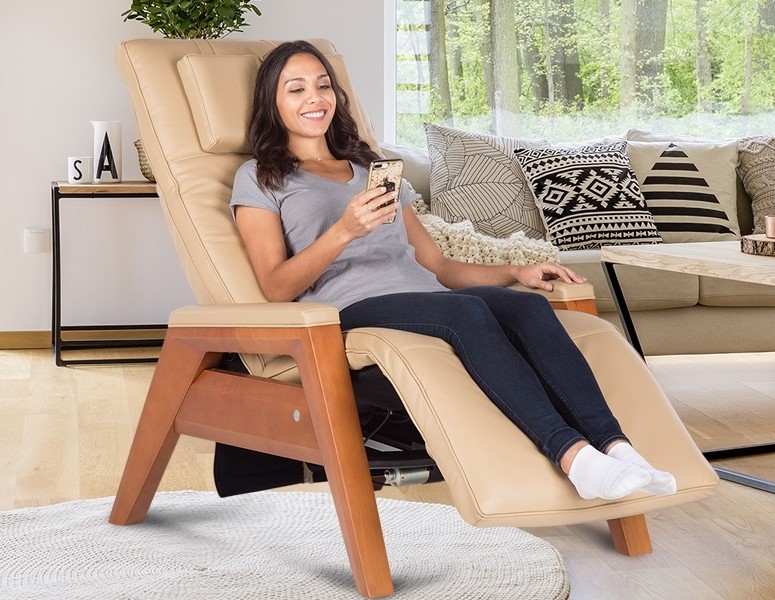



Zero gravity chairs are a popular product amongst those seeking relief from pain or tension and there isn’t a shortage of options on the market. If you’re here, chances are you just got yourself one and are unaware of how to set one up. This step-by-step guide on how to use a zero gravity chair will help you out.
Zero gravity chairs don’t mimic the physiological effects of actually being in zero-gravity, but they are designed to make people feel as light as a feather while sitting, reducing tension and stress. Moreover, zero gravity chairs can also improve blood circulation and provide relief for conditions such as sciatica – pain that radiates along the path of the sciatic nerve.
The original zero gravity chair was designed by NASA to reduce pressure and stress on the body during take-off. The technology we find in commercial zero-gravity chairs is much simpler but aims to provide the same neutral body position Trusted Source Zero-Gravity Body Posture Influences Acupressure Massage Chair | NASA Spinoff Most people don’t think about how easy it is to sit behind a desk or go through a door—for them, it’s automatic. But sitting horizontally at a command console or trying to exit a spaceship while wearing a bulky pressurized spacesuit aren’t commonplace, much less automatic. spinoff.nasa.gov that astronauts are in.
These chairs typically have multiple features that all work in tandem to help support the user’s posture and minimize discomfort; they provide adjustable lumbar support, arm- and head-rests that can be adjusted for height, and a reclinable back. Apart from these standard features, some models are also equipped with a built-in drink holder, speakers, and even massaging capabilities.
Usually, zero-gravity chairs are meant for short-term use and not to be in front of a desk or computer. Their main purpose is to allow you to relax and alleviate stress – some models are specifically designed to reduce pain in the back and neck.
Now that you have your zero-gravity chair, the first step is to set it up. Choose a location that has ample room for the chair to open up in, and where you can spend time, comfortably – like your living room or out in the lawn. Place the chair firmly on the ground on its legs and then, slowly pull apart the bottom of the chair from the backrest, opening it up until it is fully done. Ensure that it is fully extended – failing to do so could result in the chair collapsing when you sit down.
Zero-gravity chairs are made to work optimally when they are fully reclined with your feet up. To do so, first lean back into the chair and support your arms on the armrests. Next, slide your legs under the crossbar of the footrest and slowly raise your legs. Doing so, while leaning back into the chair helps you recline.
Once you’re in a position you’re comfortable with, adjust the headrest. You can use a pillow for extra support.
Some models will also allow you to make adjustments to the angle of the footrest so your feet are in line with the rest of your leg. Again, you can add a cushion or a pillow for some additional support.
Zero gravity chairs are designed to provide maximum support for your tailbone and waist when the head, neck, and spine are properly aligned like we just mentioned. Some models have also been designed specifically to accommodate people with larger frames, or for those just looking for a little more room.
Once you’ve adjusted your chair to a favorable position, you need to lock it in place. Most models will have a lock mechanism on each side of the chair and using it will increase stability, and prevent the chair from collapsing or folding in.
This is a feature that you can find on even models that cost under $100, like this lounge chair from Caravan Canopy. It’s straightforward and intuitive to use, making it effortless to lock the chair into position.
Unlocking the chair is just as easy, if not easier! Use the same lock mechanism on the side of each hand rest to unlock the chair from its position. You should be off the chair before unlocking it, to prevent the risk of falling or injury.
Zero gravity chairs are a popular form of furniture and there’s growing research Trusted Source Preliminary Comparison of Zero-Gravity Chair With Tilt Table in Relation to Heart Rate Variability Measurements Heart rate variability (HRV) measurements are performed using a tilt-table (TT) to diagnose dysfunctionality in the autonomic nervous system (ANS) and the cardiovascular system. To maintain homeostasis, the ANS adapts to body position changes through alterations in sympathetic and parasympathetic responses that can be quantified by extracting time-domain and frequency-domain parameters from the heart rate signal. www.ncbi.nlm.nih.gov that supports its benefits. They help people relax and rejuvenate by reducing the load on the spine and neck, by keeping the body in a neutral, ergonomically optimal position. They’re also easy to use and come in a variety of different styles, sizes, and colors.
Now you know how to use a zero gravity chair. Make sure you take advantage of the benefits of owning one today – you won’t be disappointed!





